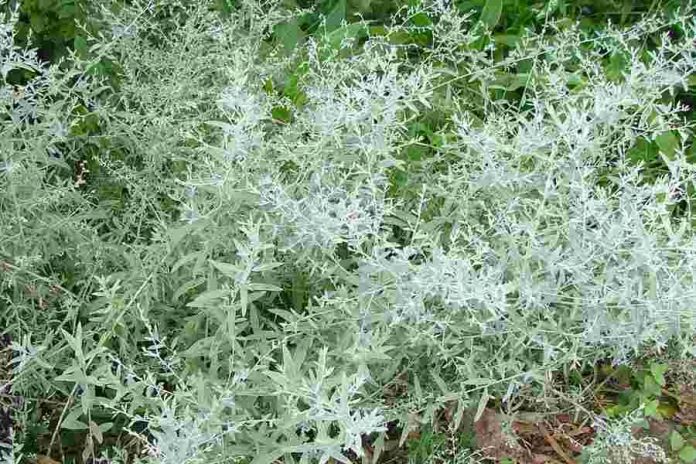Mugwort: A Weed with Potential. Mugwort, better known as ragweed, has broad-ranging uses. You can eat some mugwort and start the day with a fresh breath, apply it to skin eruptions, use it in your garden to kill moths, or use it as an ingredient in food dishes. Not bad for something many Americans consider a noxious weed! It’s related to ragweed and may cause allergies similar to ragweed, which may explain why American gardeners try to kill it whenever possible. But for other parts of the world, including Europe and Asia, mugwort is revered for its medicinal properties.
Table of Contents
What is mugwort used for?
Moxibustion
Moxibustion is a process used in traditional Asian medicine. Basically, mugwort or wormwood leaves are formed into cones about the size and shape of cigars, and then burned on or over an acupuncture point to help release energy.
Other uses
In China, moxa smoking has been an integral part of traditional medicine practices for more than 3,000 years. According to doctors and scientists, the smoke will release your body’s built-up tension and can help promote better circulation by warming up your blood. The smoke also releases stress hormones in your body.
This study shows how moxa smoke can improve the autonomic nervous system, causing a feeling of relaxation. Moxibustion could possibly even be used on babies who are in breech position because it seems to increase their movements. However, more research is needed before this can be determined for sure.
What are the side effects of mugwort?
vMugwort can be used to stimulate a woman’s menstrual cycle. It can bring on delayed menstruation and in the past was used to induce abortions. Pregnant and breast-feeding women are advised to avoid the herb because of this potential risk.
Mugwort can cause allergic reactions leading to sneezing, sinus-related symptoms, and rashes for some people. In the United States, mugwort is sold as a dietary supplement, homeopathic preparation, and is considered safe for most people. However, people with allergies to the following should avoid it:
How is mugwort used?
Mugwort has a variety of uses, such as being an herbal paste, incense, and poultice. It’s also been sold for medicinal purposes in the United States, but these products do not have safe or effective doses. Please use precautions when looking to purchase it.
Mugwort in food
Mugwort is a flower that’s native to Europe. It was used by the ancient Celts to flavor beer before hops were cultivated. It can also be used for fish and meats, including one of the traditional German Christmas dishes: goose. Mugwort can also be used as an ingredient in Chinese, Korean, and Japanese dishes. In Japan, it’s often used in various types of rice cakes and desserts. In Korea it’s an ingredient in their pancakes, soups, and salads.
Outlook
Mugwort is used in food and medicine for thousands of years. Although more research needs to be done, studies show that it’s beneficial in conventional medicine by treating a woman’s nervous system to help with labor.
It also helps alleviate menstrual cramps and helps stimulate a woman’s menstrual cycle, as well as relieving gastrointestinal issues. Talk to your doctor or someone trained in herbal medicine first if you want to try mugwort as a complementary health approach. Be sure to let them know about any allergies you have, as some people may be allergic to mugwort. Information on credentials and licensing of herbalists is available on the website of the National Center for Complementary and Integrative Health.
Mugwort is one of the most popular herbs for its medicinal properties, and it has been used for thousands of years. Although more studies need to be done, studies show that Mugwort can help with the process of moxibustion to treat nervous system disorders and help with a breech birth.
It’s also useful in treating menstrual cramps, stimulating a woman’s menstrual cycle and various gastrointestinal problems. If you want to try this herbal remedy as a complementary health approach, talk to your doctor or someone who’s trained in herbal medicine first. Be sure to inform them if you’re allergic to it. Information on credentials and licensing of herbalists is available on the website of the National Center for Complementary and Integrative Health.










